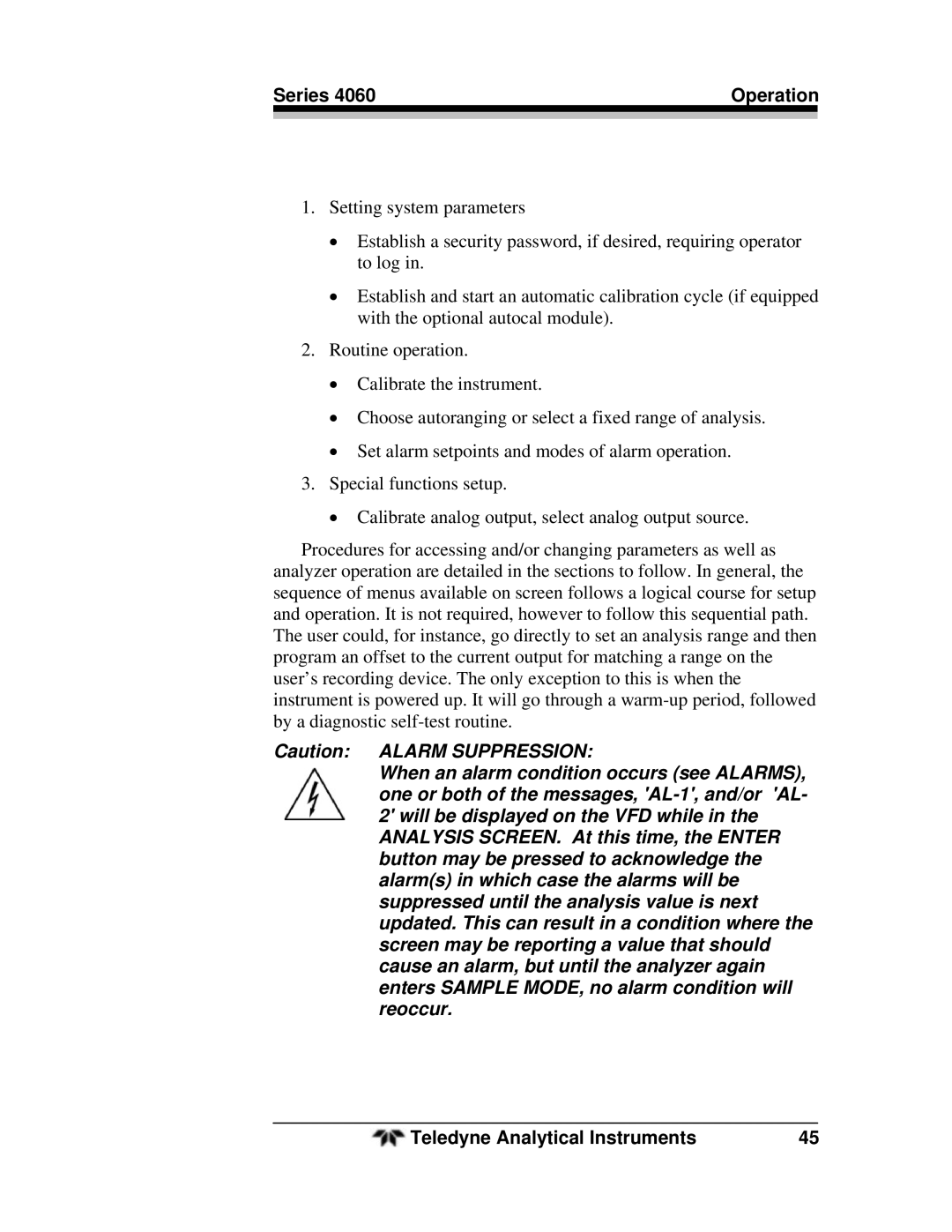
Series 4060 | Operation | |
|
|
|
1.Setting system parameters
Establish a security password, if desired, requiring operator to log in.
Establish and start an automatic calibration cycle (if equipped with the optional autocal module).
2.Routine operation.
Calibrate the instrument.
Choose autoranging or select a fixed range of analysis.
Set alarm setpoints and modes of alarm operation.
3.Special functions setup.
Calibrate analog output, select analog output source.
Procedures for accessing and/or changing parameters as well as
analyzer operation are detailed in the sections to follow. In general, the sequence of menus available on screen follows a logical course for setup and operation. It is not required, however to follow this sequential path. The user could, for instance, go directly to set an analysis range and then program an offset to the current output for matching a range on the user’s recording device. The only exception to this is when the instrument is powered up. It will go through a
Caution: ALARM SUPPRESSION:
When an alarm condition occurs (see ALARMS), one or both of the messages,
Teledyne Analytical Instruments | 45 |
